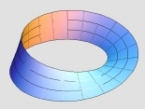Yoozername
Posts: 1121
Joined: 3/4/2006
Status: offline

|
I thought I had read this had been confirmed through the weight of the powder (pulverbezeichnung). Basically data similiar to this I came across for the HE shells:
German Ammunition Handbook dated Dez 42
Munition der 7,5cm Pak 40,
Spgr. (34) Ladungsaufbauten:
Pulvergew. --------------- Pulverbezeichnung
40-g-----------------Nz. Man, N.P. (1,5 – 1,5) Beiladung
780-g--------------- Gu. Bl. P. – AO – (4-4-0,6) einschl. 1 stuzrohr
-----------------------aus Digl Kr. R. – 10,5 – (400)
20g-------------------K2 SO4
Munition der 7,5cm Stu.K. 40 and 7,5cm Kw.K.40
Spgr. (34) Ladungsaufbauten:
Pulvergew. --------------- Pulverbezeichnung
20-g-----------------Nz. Man, N.P. (1,5 – 1,5) Beiladung
755-g--------------- Gu. Bl. P. – AO – (4-4-0,6) einschl. 1 stuzrohr
-----------------------aus Digl Kr. R. – 10,5 – (400 – 14/12)
30g-------------------K2 SO4
I would expect the AP rounds powder (which used the same projectile for the AP39 type round), to be similiarly different in powder weight. From my understanding, the L43 and L48 weapons had issues with the fluted 'brass' (or steel) cartridges not ejecting and the powder load was scaled back. The pak40 ATG did not have this issue with its strait designed cartridge. Basically, the PAK40 was a better tank killer. Therefore, AFV like the Marder series still had value almost to the end of the war.
http://www.scribd.com/doc/75911442/German-Anti-Tank-Weapons-of-World-War-II
< Message edited by Yoozername -- 11/11/2012 4:48:28 PM >
|
 Printable Version
Printable Version












 New Messages
New Messages No New Messages
No New Messages Hot Topic w/ New Messages
Hot Topic w/ New Messages Hot Topic w/o New Messages
Hot Topic w/o New Messages Locked w/ New Messages
Locked w/ New Messages Locked w/o New Messages
Locked w/o New Messages Post New Thread
Post New Thread